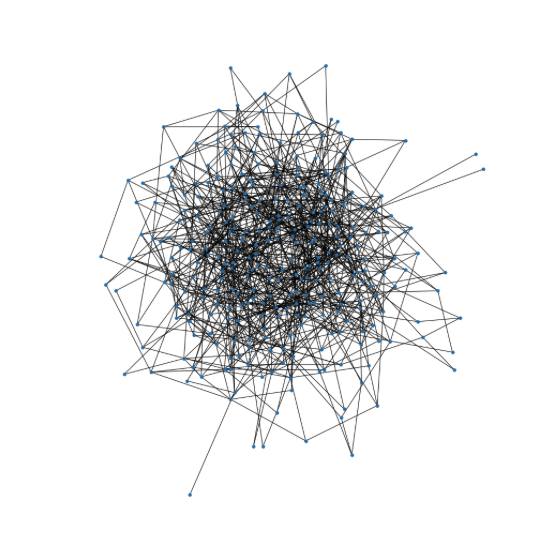Everything I know about graph representation learning
I am leaning very heavily on Hamilton’s Graph Representation Learning Book and the Stanford CS224W Course: Machine Learning with Graphs
For a comprehensive overview - look to the above resources. Below are essentially my notes and learnings derived from them, and so will have a very similar structure.
What is a graph?
A graph is a way to represent data. What is special or unique about a graph is that (in comparison to data that you’d normally see in an excel sheet, for example) it represents entities and the relationships between them. Graphs have nodes (things) and edges (relationships)
An intuitive example of this is a family tree - you have people, and their relationships to other people:
- A is a parent of B
- B is a sibling of C, D
- E is the partner of A
Mathematically this is represented as:
$G = (V,E)$
\[G = (V,E)\]G = (V,E)
$G = (V,E)
$$G = (V,E)
Where G is your entire graph, consisting of V (for nodes, also known as vertices) and E for edges.
I like food and I feel it is a relatable concept (who doesn’t eat?!) so the remainder of this post will centre around an ingredient based dataset and the relationships that exist between them.
Here is a graph of 1000 random recipes. Each node (blue dot) is an individual ingredient and the connections between them indicate that they share a recipe together:

As you can see, it’s a mess, so much so that I didn’t bother labelling which ingredient corresponds to what node. There is, however, useful information in this graph - it’s just not obvious visually. Because of this we need to build out a toolkit that lets us understand the structure of the graph. We will start with traditional techniques, but the ultimate goal is to use machine learning to extract information. Lets jump ahead for a moment to see where we are looking to end up.
So what can we do with machine learning on graphs so far?
Node classification
This area is concerned with predicting what features a node may have, given the structure of the rest of the graph
Node Clustering
This is concerned with grouping nodes with similar attributes
Edge Prediction
Given a node, which other nodes would it be connected to?
Graph Generation
Having learnt about a set of graphs, can we make a new one that looks similar?
Graph Classification
Like with node classification, can we label an entire graph?
Graph Clustering
Can we cluster entire groups of graphs together?
Some traditional techniques
What is a node embedding?
Node embedding is the act of taking nodes in a graph and representing them in a way that is easier for us to use. It is a technique used in graph machine learning. It’s necessary, as the current machine learning methods are designed for regular inputs, e.g. sliding windows for NLP and CV tasks. Graphs, however, are not suited to these sliding window approaches, as there is no obvious start point or direction in which to slide a window. Because of this, it is beneficial to learn an embedding of a graph, upon which these traditional techniques can be applied.
How do we create an embedding?
Embedding a graph is a lossy technique, not all information in the graph will make it into the final embedding. A successful embedding will therefore preserve useful information, while discarding less relevant details. Therefore as the practitioner we must determine what information is useful, and doing so will guide us into designing a useful embedding.
We are looking for a representation in the embedding space, that serves as a good match or proxy for the graph in it’s original form. More precisely, we want nodes that are similar in the graph, to be near each other in our embedding space.
How do we define similarity?